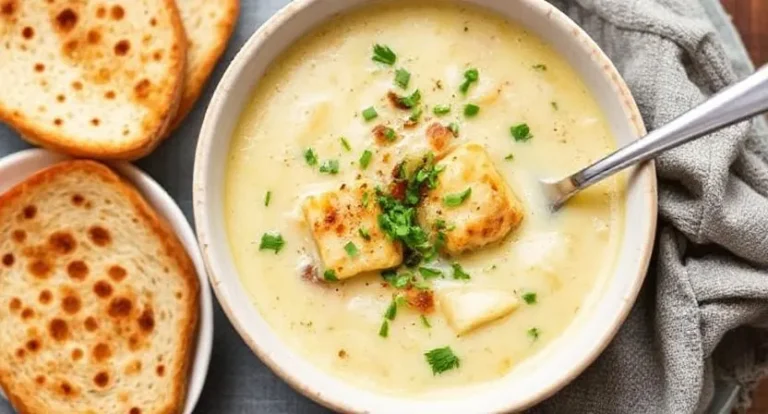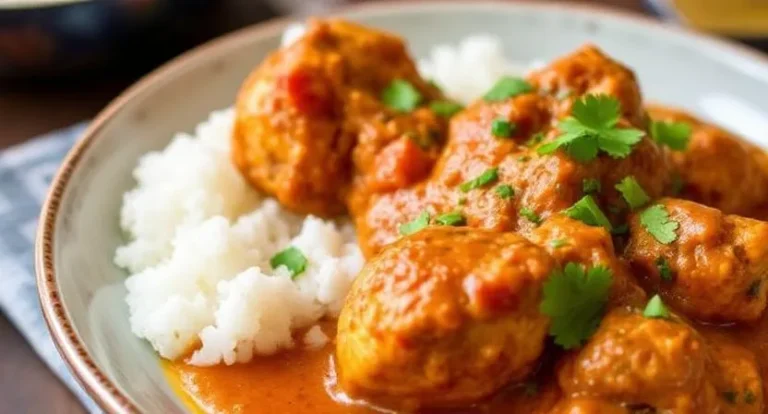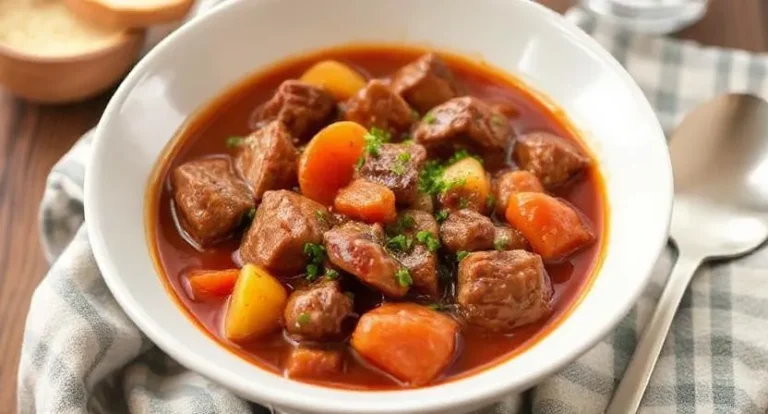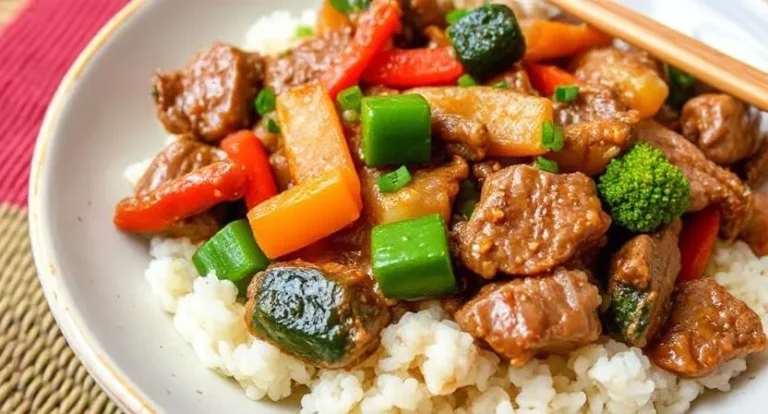New Orleans Shrimp and Crab Gumbo
In the heart of Louisiana cuisine lies a dish as storied as the streets of the French Quarter—gumbo. A flavorful embodiment of New Orleans’ multicultural roots, this rich, soulful stew fuses French finesse, Spanish spices, African depth, and Native earthiness into one unforgettable meal. Among its many incarnations, shrimp and crab gumbo reigns supreme, a celebratory staple at Southern tables from Mardi Gras blowouts to lazy Sunday suppers. Steeped in tradition and brimming with bold character, it offers a taste of the Crescent City’s culinary soul. Here’s your roadmap to conjuring this Creole classic in your own kitchen.
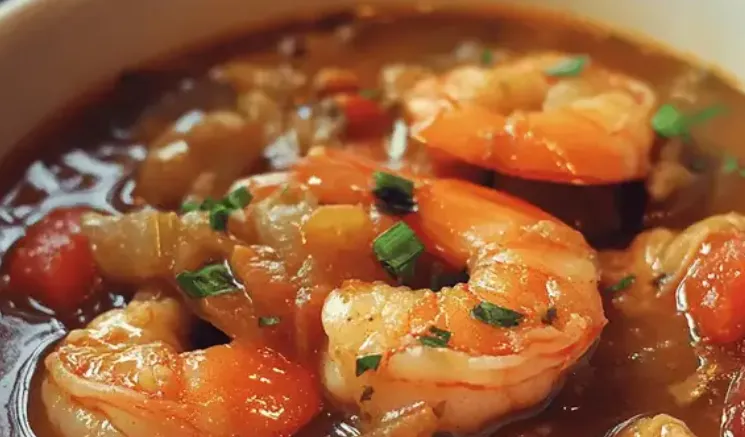
What Makes It Iconic
At the core of shrimp and crab gumbo is a slow-simmered marvel: the roux. This dark, nutty mixture of flour and oil requires patience and precision—it’s the flavor anchor of the entire dish. Layered on top of this base is the holy trinity of Creole cooking: onions, bell peppers, and celery, each bringing their own texture and depth. Okra or filé powder lends the gumbo its signature thickness, while succulent Gulf shrimp and sweet blue crab infuse it with briny, coastal brilliance. A symphony of spices—think thyme, bay leaf, paprika—ties it all together, resulting in a luxurious stew that is as comforting as it is complex.
Ingredients You’ll Need
- 1 lb fresh shrimp, peeled and deveined
- 1 lb fresh blue crab meat
- ¾ cup vegetable oil
- ¾ cup all-purpose flour
- 2 medium onions, chopped
- 1 green bell pepper, chopped
- 2 celery stalks, chopped
- 4 garlic cloves, minced
- 6 cups seafood stock
- 1 can (14.5 oz) diced tomatoes
- 2 bay leaves
- 1 tbsp Creole seasoning
- 1 tsp dried thyme
- 1 tsp smoked paprika
- Salt and black pepper to taste
- 1 cup sliced okra (optional)
- 1 tbsp filé powder (optional)
- Cooked white rice, for serving
- Fresh parsley, chopped (garnish)
- Green onions, thinly sliced (garnish)
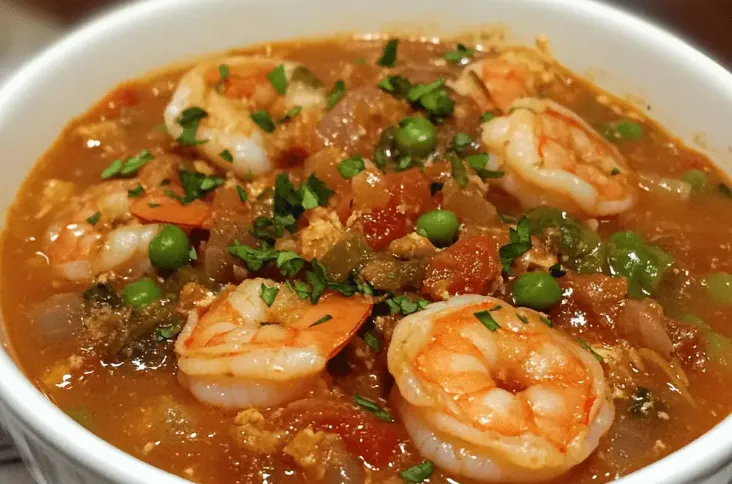
Step-by-Step Cooking Instructions
Step 1: Craft the Roux
In a heavy-bottomed Dutch oven, combine the oil and flour over medium-low heat. Stir continuously—yes, continuously—for 20 to 30 minutes until the mixture darkens to a rich, chocolate hue. This isn’t just a step; it’s the soul of the gumbo. Do not rush.
Step 2: Soften the Veggies
Once your roux hits its color, add onions, bell pepper, and celery. Stir until coated and cook for about 5-7 minutes until softened. Toss in the garlic and stir for an additional 2 minutes to bloom its flavor.
Step 3: Simmer the Base
Pour in the seafood stock slowly while stirring. Add diced tomatoes, bay leaves, Creole seasoning, thyme, and smoked paprika. Season with salt and pepper. Bring the mixture to a gentle simmer and let it cook for 45 minutes to let the flavors deepen.
Step 4: Add the Seafood
Gently stir in the crab and okra (if using) and simmer for 15 minutes. Finally, fold in the shrimp and cook until just opaque—roughly 5 minutes.
Step 5: Final Flourishes
If using filé powder, remove the pot from heat before stirring it in—never cook filé over direct heat. Don’t forget to fish out those bay leaves.
Serving Suggestions
Ladle the gumbo over a scoop of steaming white rice. Crown it with a sprinkle of parsley and green onions for brightness. It’s a bowl of comfort best served with cold drinks and warm company.
Prep, Cook Time & Nutritional Info
- Prep Time: 30 minutes
- Cook Time: 1 hour 15 minutes
- Total Time: 1 hour 45 minutes
- Servings: 6–8
- Calories: Approx. 330 per serving
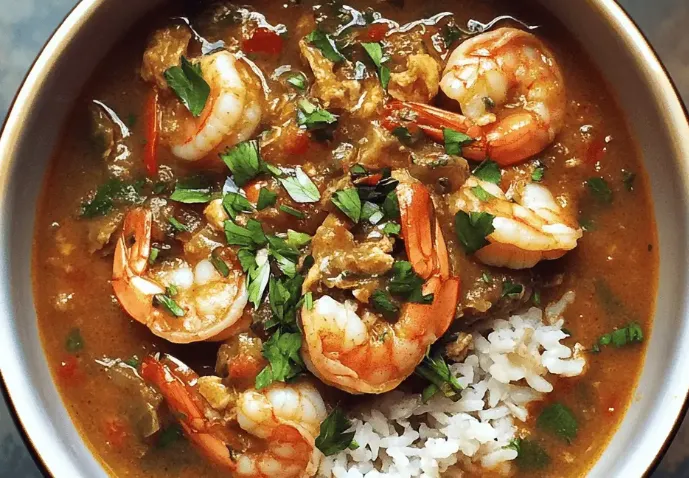
Storage & Reheating
Let the gumbo cool fully before storing. Keep it in airtight containers in the fridge for up to 3 days. To reheat, simmer gently over low heat. For longer shelf life, freeze for up to 2 months—just thaw overnight in the refrigerator before warming it back up. Gumbo ages like fine wine—the flavors intensify.
Expert Tips for the Perfect Gumbo
- Master the Roux: Stir with vigilance. A scorched roux ruins the dish—aim for a dark, earthy brown.
- Choose Quality Seafood: Fresh is best, but frozen works in a pinch. Just defrost thoroughly.
- Season in Layers: Build complexity gradually with each addition.
- Broth Flexibility: No seafood stock? Chicken or vegetable broth can still work wonders.
- Add-Ins: Andouille sausage adds a smoky kick, while okra enhances body and bite.
Flavorful Variations to Explore
- Vegetarian Twist: Go heavy on veggies like okra and zucchini. Use a robust veggie broth.
- Heat It Up: Add cayenne, jalapeños, or Louisiana hot sauce if you love a kick.
- Seafood Overload: Scallops and crawfish bring luxurious texture.
- Gluten-Free Gumbo: Use rice flour for the roux.
- Low-Carb Adaptation: Serve over cauliflower rice and cut back on roux.
Perfect Pairings
- Rice: White or jasmine rice remains the classic companion.
- Cornbread: A golden slice balances the bold flavors.
- Fresh Salad: Crisp greens lighten the richness.
- Louisiana Beer: Try an Abita for regional harmony.
- Iced Tea: Sweetened or not, it’s the Southern drink of choice.
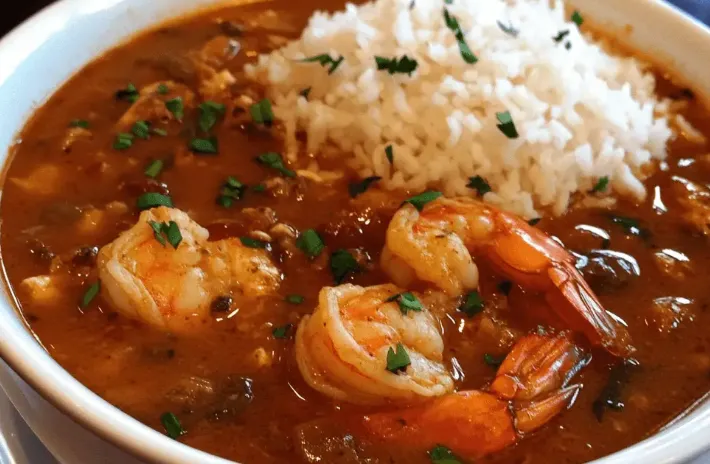
Frequently Asked Questions
Can I make gumbo ahead of time?
Yes—flavors deepen overnight in the fridge.
How long does gumbo keep?
Refrigerate for 3 days or freeze up to 3 months in airtight containers.
Best rice to serve with gumbo?
Classic white or jasmine rice. Choose what suits your taste.
Is okra a must?
Not necessarily. You can use filé powder instead—or skip both if preferred.
Conclusion
Shrimp and crab gumbo is more than a meal—it’s a celebration of culture, community, and comfort. With each simmering pot, you’re not just cooking; you’re tapping into generations of flavor and soul. Whether served at a bustling New Orleans block party or your own dinner table, this dish brings people together. Stir with heart, season with joy, and let the aroma of the bayou warm your home.


